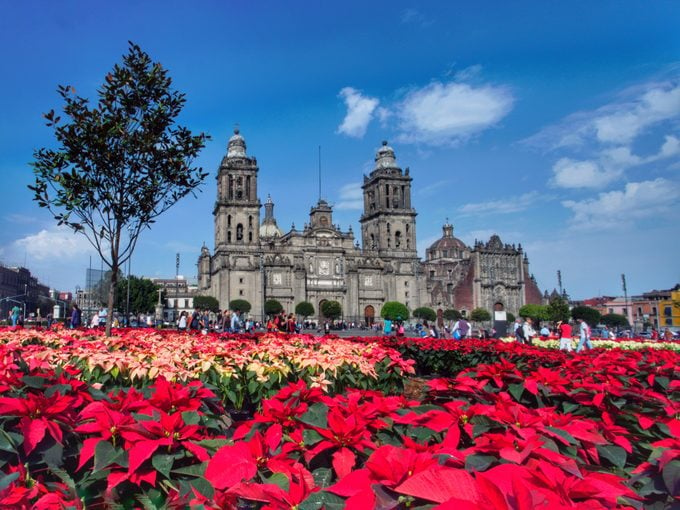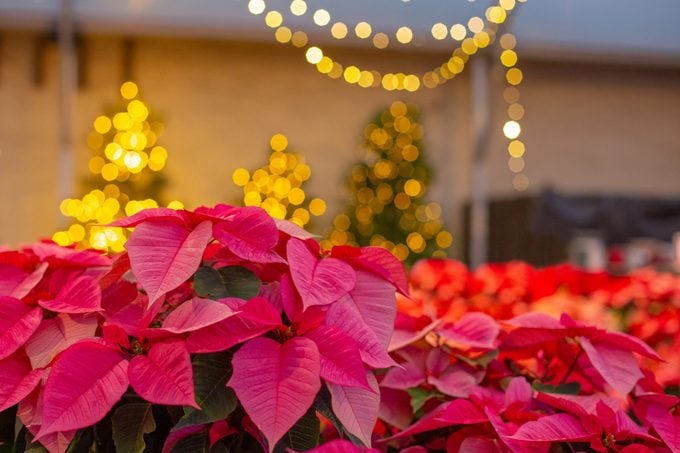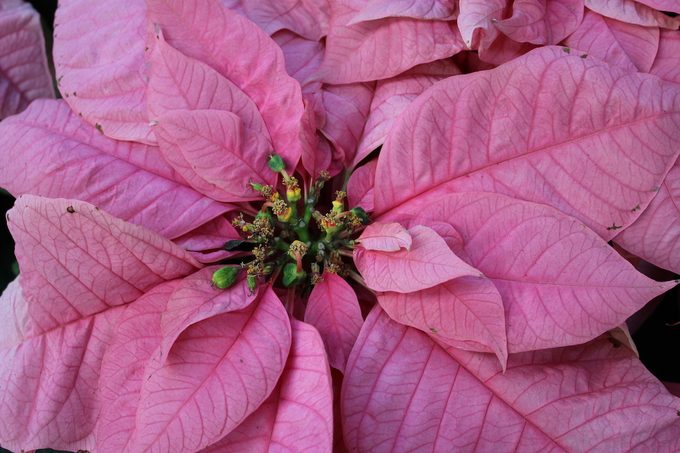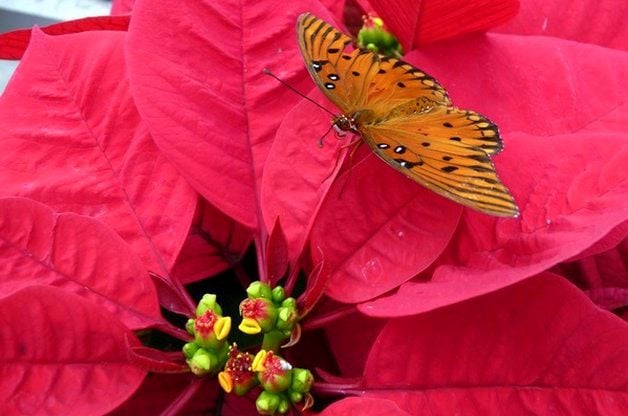6 Fascinating Facts About Poinsettias
Updated: Oct. 31, 2023
Want to look like a botanical genius? Impress the folks around your Christmas dinner table this year when you share facts about poinsettias.
Everyone’s favorite Christmas flower has an interesting history and some unusual growth habits. Here are fascinating facts about poinsettias to share with friends and family this year.
Poinsettia History in Mexico

Those who know even basic poinsettia facts can tell you these plants come from Mexico. They have a long history there. Aztecs made red dye from the plants and used the milky sap medicinally. When Christianity was introduced by Europeans, poinsettias came to be associated Christmas almost immediately.
Legend tells of a poor young Mexican girl named Pepita who wished to give a present to baby Jesus at the Christmas service. Her cousin Pedro encouraged her, saying, “Even small gifts given with love make Jesus happy.” With nothing else to give, she pulled a handful of flowering weeds from the side of the road and laid them at the altar. Moments later, they transformed into brilliant red blooms—surely a miracle.
Learn how to care for poinsettias now and after the holidays.
From Mexico to the World

In 1825, the first Mexican ambassador was appointed, Joel Roberts Poinsett. He was so taken with poinsettias that he sent cuttings home to South Carolina. From there, he sent them to friends and family each year. One of these friends was famous botanist John Bartram, who sold them at the Philadelphia flower show and introduced them to the wider world. Over time, poinsettias became synonymous with Christmas everywhere.
Discover more surprising facts about holiday flowers and plants.
Tiny Flowers and Colored Leaves

The red “flowers” of poinsettias aren’t flowers at all. The flowers of the plant are tiny and yellow, tucked in the center of each collection of leaves. The colored leaves are known as bracts. The leaves start out green, spending most of the year growing large. They begin to turn red when the plant starts to receive at least 12 hours of complete darkness each day. Colored bracts help draw pollinators to the diminutive flowers, which might otherwise go unnoticed.
Want more Christmas spirit? Try a mini Norfolk Island pine tree!
Butterflies Love Poinsettia Flowers

Speaking of pollinators, butterflies love the flowers of poinsettia. If you live in a warmer climate (no frosts or freezes at all), plant your poinsettias outside to draw butterflies to your garden.
Learn how to grow a Christmas cactus and help it bloom.
Poinsettias Don’t Like Cold Winter Weather
Poinsettias bloom their best in high humidity, so keep your plant away from cold drafts.
Find out how to grow and care for amaryllis.
Poinsettias Are Not Poisonous
Despite the very common myth, poinsettias are not extremely poisonous. Though the sap is mildly toxic and causes stomach distress, no deaths of people or animals have been reported from eating poinsettia. In fact, studies say that a 50 pound child would need to eat 500 leaves before being in serious danger. Given that poinsettia is very bitter, it’s unlikely a child or pet would take more than one bite.
Now that you know some fascinating facts about poinsettias, discover festive facts about Christmas trees.




















